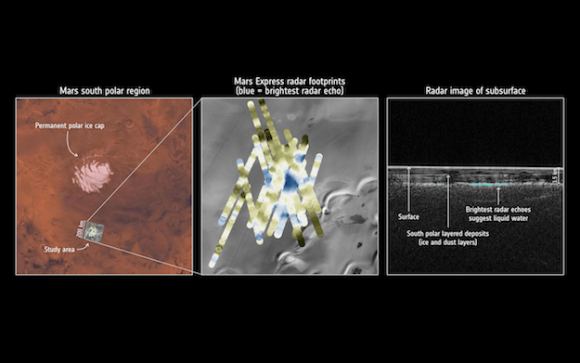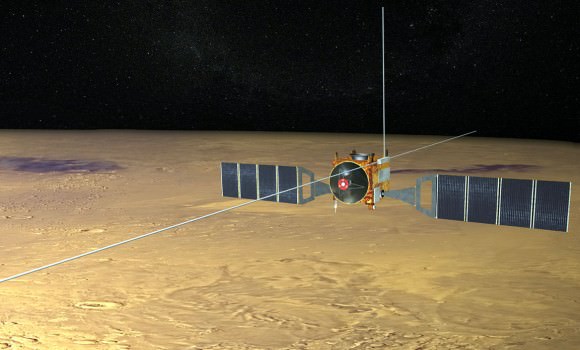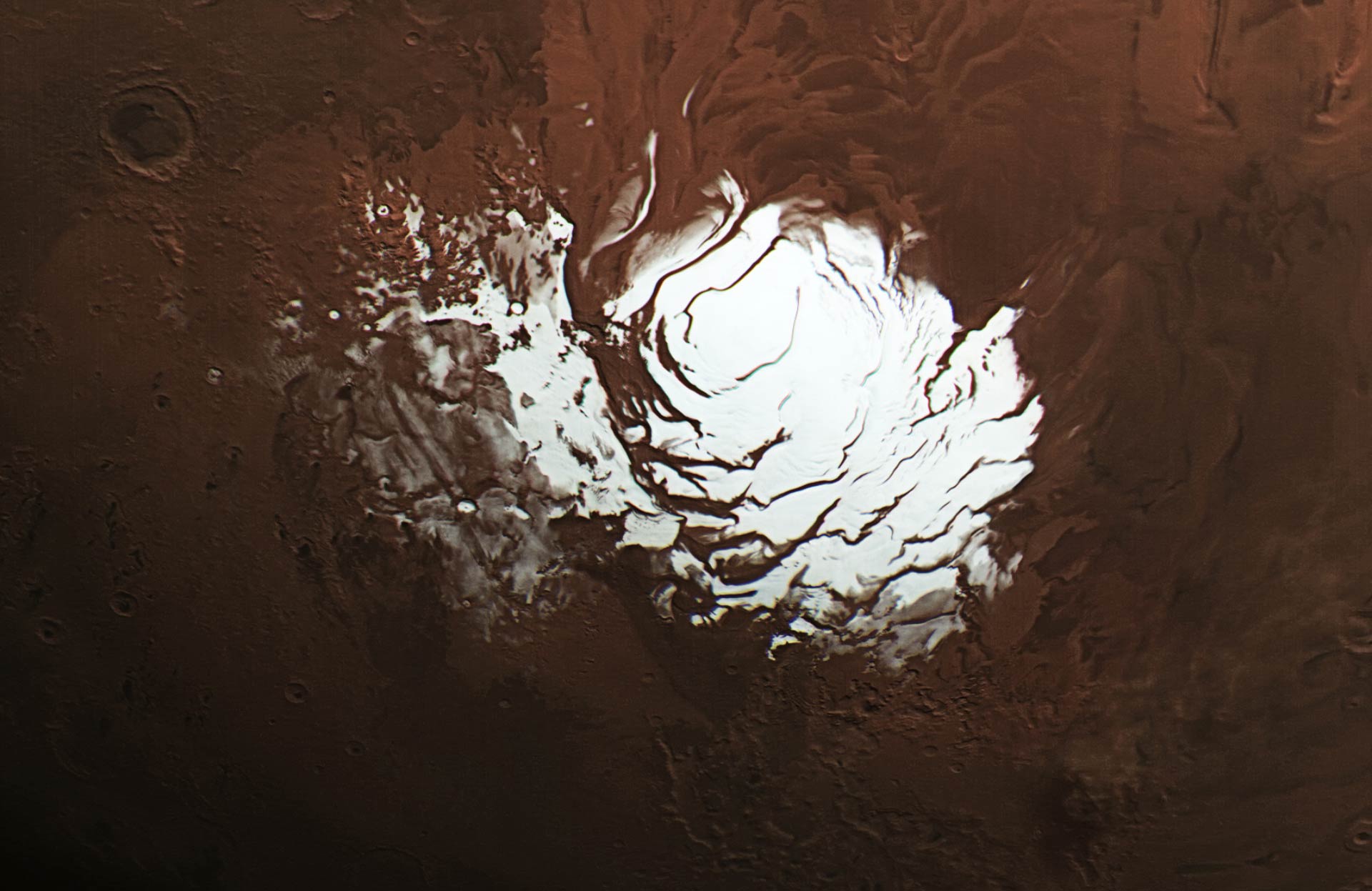According to evidence gathered by multiple robotic orbiters, rovers, and landers over the course of several decades, scientists understand that Mars was once a warmer, watery place. But between 4.2 and 3.7 billion years ago, this began to change. As Mars magnetic field disappeared, the atmosphere slowly began to be stripped away by solar wind, leaving the surface the cold and dry and making it impossible for water to exist in liquid form.
While much of the planet’s water is now concentrated in the polar ice caps, scientists have speculated some of Mars’ past water could still be located underground. Thanks to a new study by a team of Italian scientists, it has now been confirmed that liquid water still exists beneath Mars’ southern polar region. This discovery has put an end to a fifteen-year mystery and bolstered the potential for future missions to Mars.
The study, titled “Radar evidence of subglacial liquid water on Mars“, recently appeared in the journal Science. The study was led by Roberto Orosei of the National Institute of Astrophysics (INAF) in Italy, and included members from the Italian Space Agency (ASI), the ESA Center for Earth Observation (ESRIN), and multiple observatories, research institutions and universities.

So far, robotic missions have revealed considerable evidence of past water on Mars. These include dried-out river valleys and gigantic outflow channels discovered by orbiters, and evidence of mineral-rich soils that can only form in the presence of liquid water by rovers and landers. Early evidence from the ESA’s Mars Express probe has also showed that water-ice exists at the planet’s poles and is buried in the layers interspersed with dust.
However, scientists have long suspected that liquid water could exist beneath the polar ice caps, much in the same way that liquid water is believed to underlie glaciers here on Earth. In addition, the presence of salts on Mars could further reduce the melting point of subsurface water and keep it in a liquid state, despite the sub-zero temperatures present on both the surface and underground.
For many years, data from the Mars Express’ Mars Advanced Radar for Subsurface and Ionosphere Sounding (MARSIS) instrument – which has been used to study the southern polar region – has remained inconclusive. Like all ground-penetrating radar, this instrument relies on radar pulses to map surface topography and determine the properties of the materials that lie beneath the surface.
Luckily, after considerable analysis, the study team was able to develop new techniques that allowed them to collect enough high-resolution data to confirm the presence of liquid water beneath the southern ice cap. As Andrea Cicchetti, the MARSIS operations manager and a co-author on the new paper, indicated:
“We’d seen hints of interesting subsurface features for years but we couldn’t reproduce the result from orbit to orbit, because the sampling rates and resolution of our data was previously too low. We had to come up with a new operating mode to bypass some onboard processing and trigger a higher sampling rate and thus improve the resolution of the footprint of our dataset: now we see things that simply were not possible before.”

What they found was that the southern polar region is made of many layers of ice and dust down to a depth of about 1.5 km over a 200 km-wide area, and featured an anomalous area measuring 20-km wide. As Roberto Orosei, the principal investigator of the MARSIS experiment and lead author of the paper, explained in a recent ESA press release:
“This subsurface anomaly on Mars has radar properties matching water or water-rich sediments. This is just one small study area; it is an exciting prospect to think there could be more of these underground pockets of water elsewhere, yet to be discovered.”
After analyzing the properties of the reflected radar signals and taking into account the composition of the layered deposits and expected temperature profiles below the surface, the scientists concluded that the 20-km wide feature is an interface between the ice and a stable body of liquid water. For MARSIS to be able to detect such a patch of water, it would need to be at least several tens of centimeters thick.
These findings also raise the possibility of there being life on Mars, both now and in the past. This is based on research that found microbial life in Lake Vostok, which is located some 4 km (2.5 mi) below the ice in Antarctica. If life can thrive in salty, subglacial environments on Earth, then it is possible that they could survive on Mars as well. Determining if this is the case will be the purpose of existing and future missions to Mars.

As Dmitri Titov, one of the Mars Express project scientist, explained:
“The long duration of Mars Express, and the exhausting effort made by the radar team to overcome many analytical challenges, enabled this much-awaited result, demonstrating that the mission and its payload still have a great science potential. This thrilling discovery is a highlight for planetary science and will contribute to our understanding of the evolution of Mars, the history of water on our neighbour planet and its habitability.”
The Mars Express launched on June 2nd, 2003, and will celebrate 15 years in orbit of Mars by December 25th this year. In the coming years, it will be joined by the ESA’s ExoMars 2020 mission, NASA’s Mars 2020 Rover, and a number of other scientific experiments. These missions will pave the way for a potential crewed mission, which NASA is planning to mount by the 2030s.
If there is indeed liquid water to be found on Mars, it will go a long way towards facilitating future research and even an ongoing human presence on the surface. And if there is still life on Mars, the careful research of its ecosystems will help address the all-important question of how and when life emerged in the Solar System.

